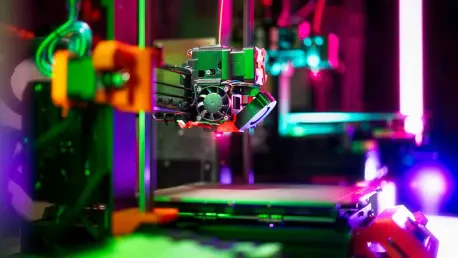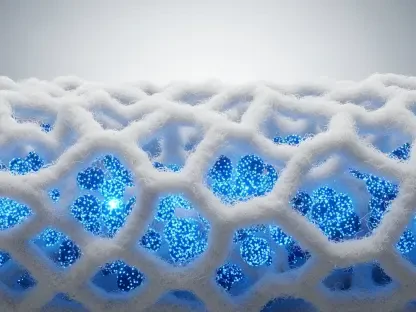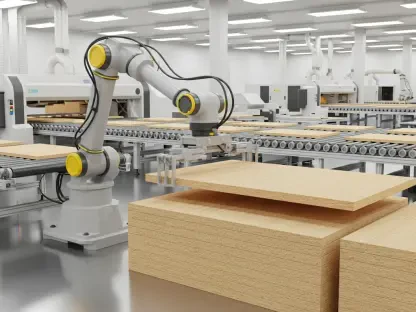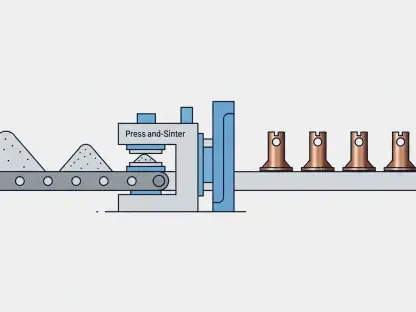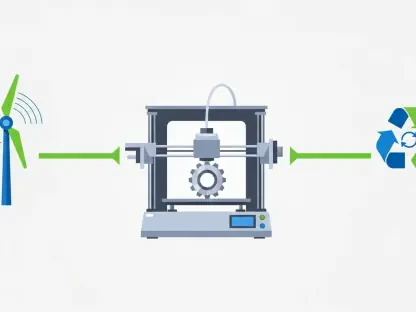In a world where additive manufacturing (AM) is reshaping industries from aerospace to medical technology, the prohibitive cost and inconsistent performance of titanium alloys have long been stumbling blocks to wider adoption. A groundbreaking development from RMIT University in Melbourne, Australia, promises to change that narrative with the introduction of a new titanium alloy that slashes costs while boosting strength and reliability. Engineered by experts at RMIT’s Centre for Additive Manufacturing (RCAM), this innovation tackles the dual challenges of affordability and mechanical excellence, potentially revolutionizing how high-performance components are produced through 3D printing. By replacing costly elements with more accessible alternatives, this alloy cuts production expenses by roughly a third, opening doors to scalable applications. This advancement signals a pivotal moment for AM, where cutting-edge research could finally align with practical, industry-wide implementation, driving efficiency and sustainability in manufacturing processes.
Breaking New Ground in Additive Manufacturing
Transforming Cost Barriers in Titanium Production
The financial hurdle of using titanium in 3D printing has often deterred industries from fully embracing the technology, especially when traditional alloys like Ti-6Al-4V rely on expensive materials such as vanadium. RMIT’s latest alloy addresses this issue head-on by substituting high-cost elements with cheaper, readily available options, achieving a significant reduction in expenses without compromising quality. Detailed in a recent study published in a leading scientific journal, the research showcases how this cost-effective alternative maintains exceptional mechanical properties, making it a viable choice for sectors that demand precision and durability. The implications of this are profound, as lower production costs could democratize access to advanced manufacturing techniques, enabling smaller companies and emerging markets to leverage AM for complex projects. This shift not only challenges the status quo of material sourcing but also sets a precedent for future innovations in alloy design that prioritize economic accessibility alongside performance.
Enhancing Mechanical Performance for Industry Needs
Beyond affordability, the new alloy from RMIT stands out for its superior strength and ductility compared to conventional AM titanium materials, addressing long-standing performance limitations. A key achievement lies in the alloy’s uniform grain structure, which eliminates the uneven columnar microstructures often found in other 3D-printed metals that can weaken components under stress. By developing a predictive design framework, the research team has ensured consistent material behavior, enhancing reliability for critical applications in fields like aerospace and automotive manufacturing. This structural advancement means that parts produced with this alloy can withstand demanding conditions without the risk of unexpected failures, a crucial factor for industries where safety is paramount. The focus on mechanical excellence highlights how targeted innovation can overcome technical barriers, paving the way for broader adoption of AM in high-stakes environments where precision is non-negotiable.
Paving the Way for Industrial Adoption
Industry Demand for Game-Changing Materials
The push for transformative materials in AM has gained momentum as industries recognize that incremental improvements are no longer sufficient to meet modern manufacturing challenges. Feedback gathered through market validation programs underscores a clear demand for alloys that deliver substantial advancements, a benchmark that RMIT’s titanium alloy meets with its cost and performance benefits. Sectors such as medical technology, where lightweight yet strong materials are essential for implants and devices, stand to gain significantly from this development. The alloy’s ability to balance affordability with high-quality output positions it as a potential catalyst for rethinking production strategies across multiple fields. This alignment with industry needs reflects a broader trend toward sustainable and scalable solutions, where innovations must offer tangible, disruptive value to gain traction in competitive markets focused on efficiency and long-term impact.
Collaboration as a Catalyst for Commercialization
Translating academic breakthroughs into real-world applications requires robust partnerships, and RMIT is actively seeking collaborators in key industries to advance the commercialization of this titanium alloy. By engaging with stakeholders in aerospace, automotive, and healthcare sectors, the university aims to refine the material for specific use cases, ensuring it meets stringent regulatory and performance standards. The research team has outlined a transparent methodology for selecting alloying elements, providing a replicable blueprint that could inspire future alloy developments tailored to diverse needs. This collaborative approach emphasizes the importance of integrating supply chain expertise to scale production and address logistical challenges. As these partnerships unfold, the focus remains on bridging the gap between laboratory success and industrial implementation, a critical step in transforming how 3D printing shapes manufacturing landscapes worldwide.
Reflecting on a Milestone Achievement
Building on a Legacy of Innovation
Looking back, the strides made by RMIT in developing this low-cost, high-strength titanium alloy marked a turning point for additive manufacturing. The meticulous effort to replace expensive components with affordable alternatives while enhancing mechanical properties demonstrated a rare blend of ingenuity and pragmatism. This achievement tackled critical pain points in cost and performance, delivering a material that outperformed traditional options in both strength and structural consistency. The research not only addressed immediate industry challenges but also laid a solid foundation for future explorations in alloy design. By prioritizing uniform grain structures and eliminating problematic microstructures, the team set a new standard for reliability in 3D-printed titanium components. This milestone stood as a testament to the power of focused innovation in overcoming barriers that once seemed insurmountable, reshaping expectations for what AM could achieve in high-demand sectors.
Charting the Future of Manufacturing Solutions
As the journey continues, the path forward for this titanium alloy hinges on strategic collaborations that could bring its benefits to market. The emphasis shifts to actionable steps, such as partnering with industry leaders to test and refine the material for specialized applications in aerospace and beyond. Exploring scalability through optimized production processes emerges as a priority, ensuring that cost savings translate into widespread accessibility. Additionally, the framework established by RMIT offers a blueprint for other researchers to design tailored alloys, potentially sparking a wave of innovation across materials science. The focus on sustainability and performance positions this development as a cornerstone for rethinking manufacturing paradigms, encouraging industries to adopt AM solutions that balance economic and technical demands. This ongoing commitment to progress promises to redefine how advanced materials shape the future of global production.
